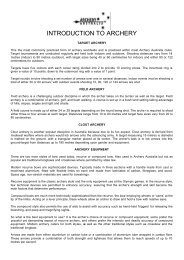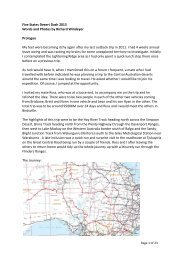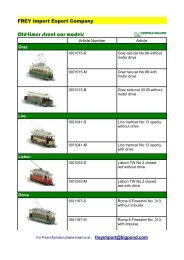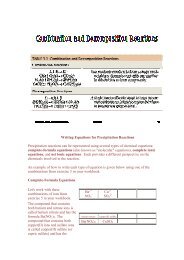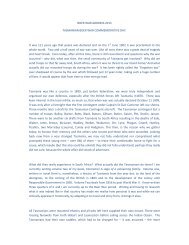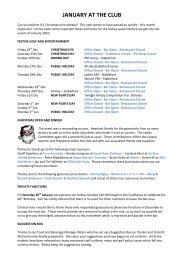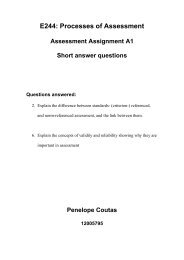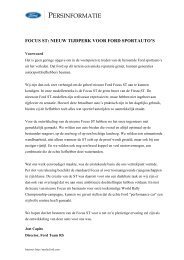TREATING ACIDITY IN COAL PIT LAKES USING SEWAGE AND ...
TREATING ACIDITY IN COAL PIT LAKES USING SEWAGE AND ...
TREATING ACIDITY IN COAL PIT LAKES USING SEWAGE AND ...
You also want an ePaper? Increase the reach of your titles
YUMPU automatically turns print PDFs into web optimized ePapers that Google loves.
Treating acidity in pit lakes using sewage and greenwaste<br />
carbon from plant matter is dependent upon decomposition, which is extremely limited in<br />
acidic and anoxic conditions (Harris & Ragusa, 2001). To this end, Waybrant et al. (1998)<br />
found mixtures containing multiple sources of organic matter demonstrated higher sulfate<br />
reduction rates than those of single sources. Castro and Moore (1997) observed that,<br />
“Therefore, for economic feasibility the added organic matter must be cheap and locally<br />
available.” Hard et al. (2003) echoed this view noting that, “For a microbial process to be<br />
economically feasible, the carbon and energy source should be cheap, widely available and<br />
highly effective.” However, most experiments into the utility of sulfate reduction processes<br />
for ameliorating AMD have instead focused upon highly labile but expensive carbon<br />
substrates such as ethanol (Kolmert & Johnson, 2001; Martin et al., 2003; McNee et al.,<br />
2003), sugar (Pöhler et al., 2002; Wendt-Potthoff et al., 2002; Frömmichen et al., 2003;<br />
Geller et al., 2003; Frömmichen et al., 2004), cow manure (Drury, 1999, 2000), etc. For<br />
many remote mining locations, these materials are unviable for practical and economic<br />
reasons. The only bulk carbon sources likely to be available in these areas will be municipal<br />
sewage, and green waste (including a broad range of plant material collected by local<br />
government from domestic and municipal lawns and gardens).<br />
Using readily-available and economically-viable sources of organic materials, Waybrant et al.<br />
(1998) found all of the eight organic matter types they tested reduced sulfate, with sewage<br />
sludge the fastest to achieve high levels of sulfate reduction. The mixture of sewage sludge<br />
and green waste (leaf mulch, woodchips and sawdust) reduced 4,500 mg L -1 of sulfate to<br />
3 within 30 days of SRB activation and simultaneously decreased<br />
divalent metal concentrations. This mixture proved more effective in ameliorating pH and<br />
metal concentrations than either sewage sludge (little response) or plant material (nil<br />
response). Gusek (2002) even suggested injecting sewage sludge into mine shafts and adits to<br />
remove and prevent production of acidity from these sources.<br />
22



